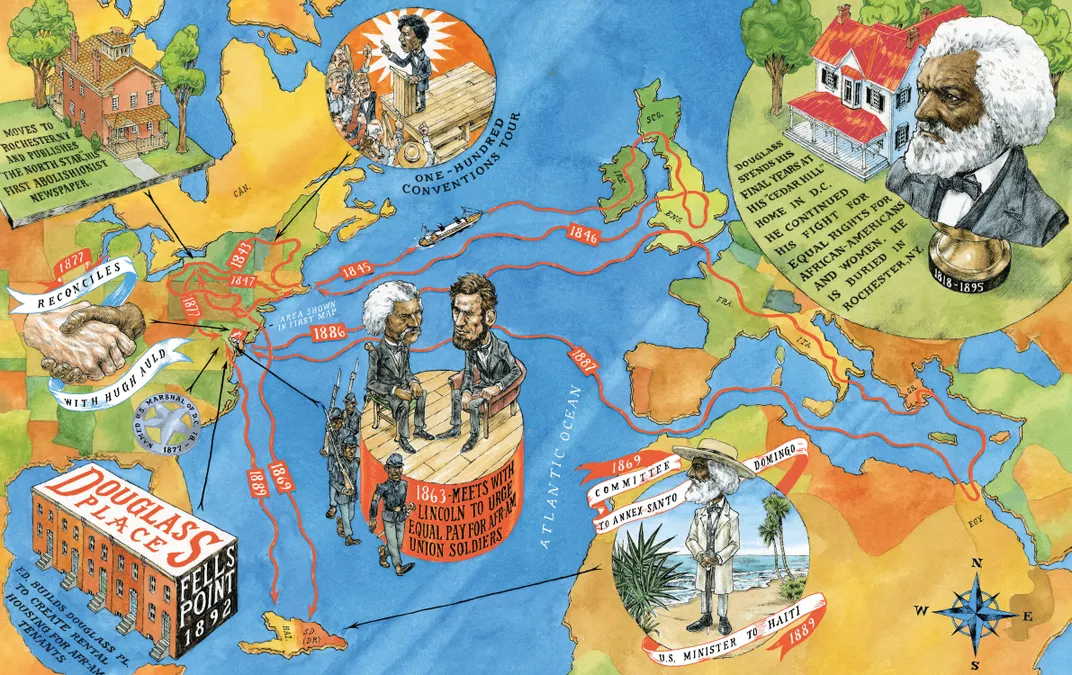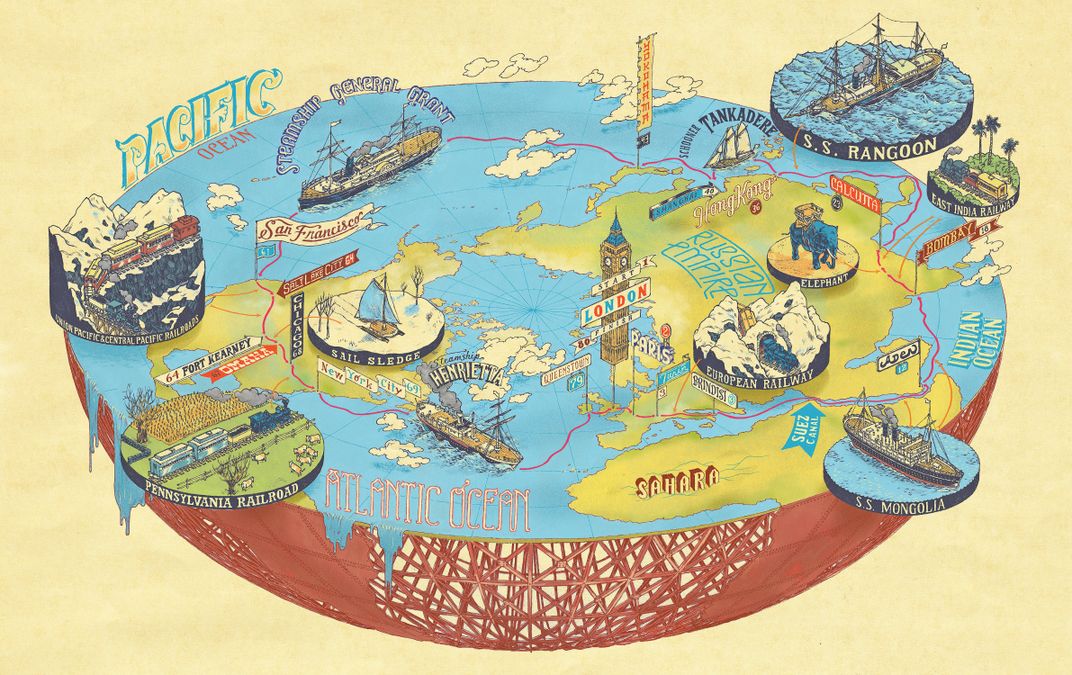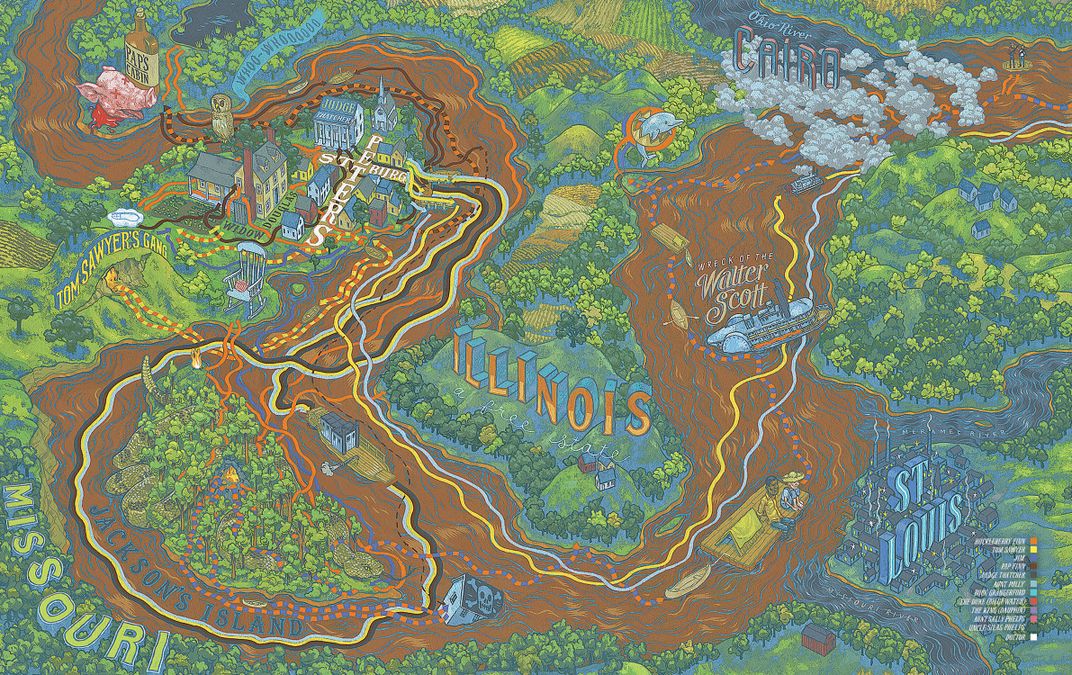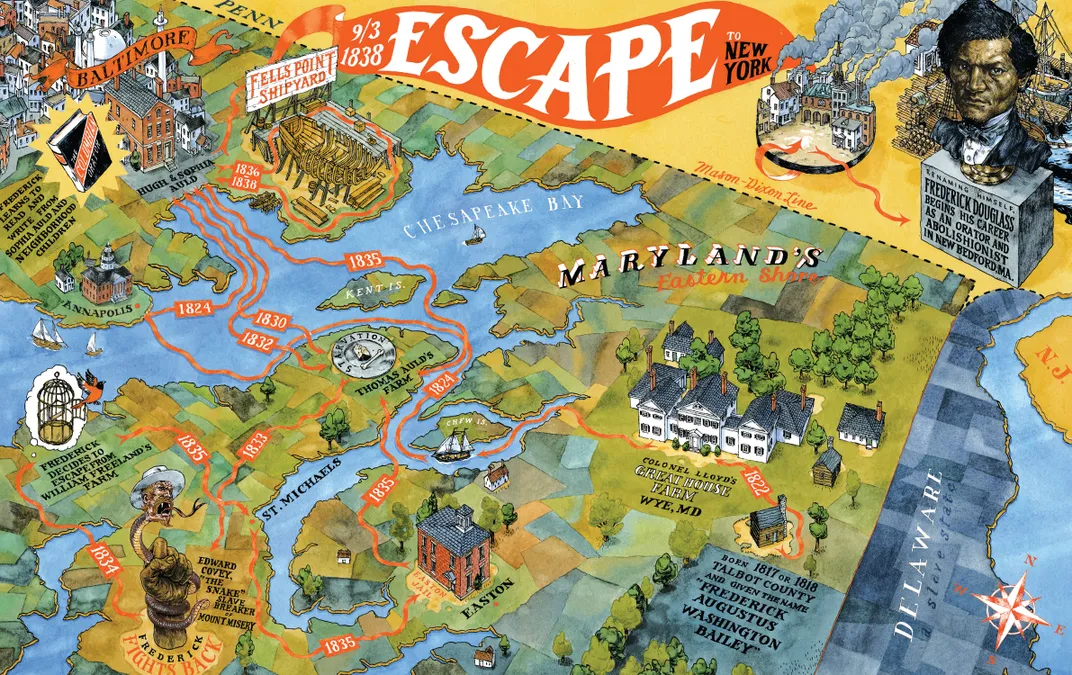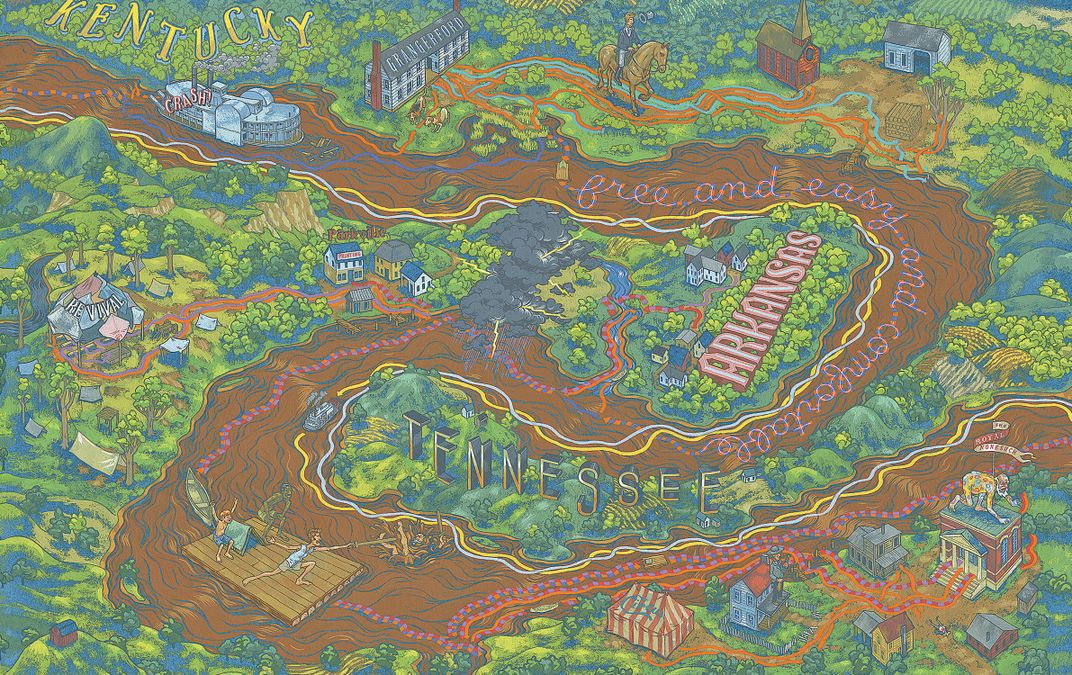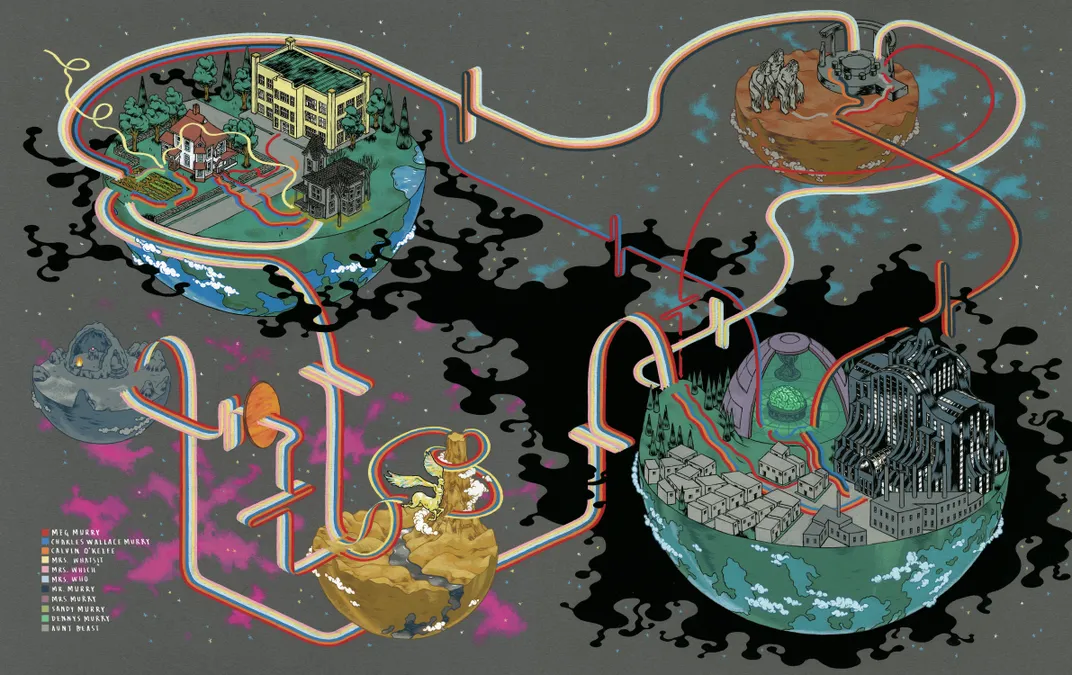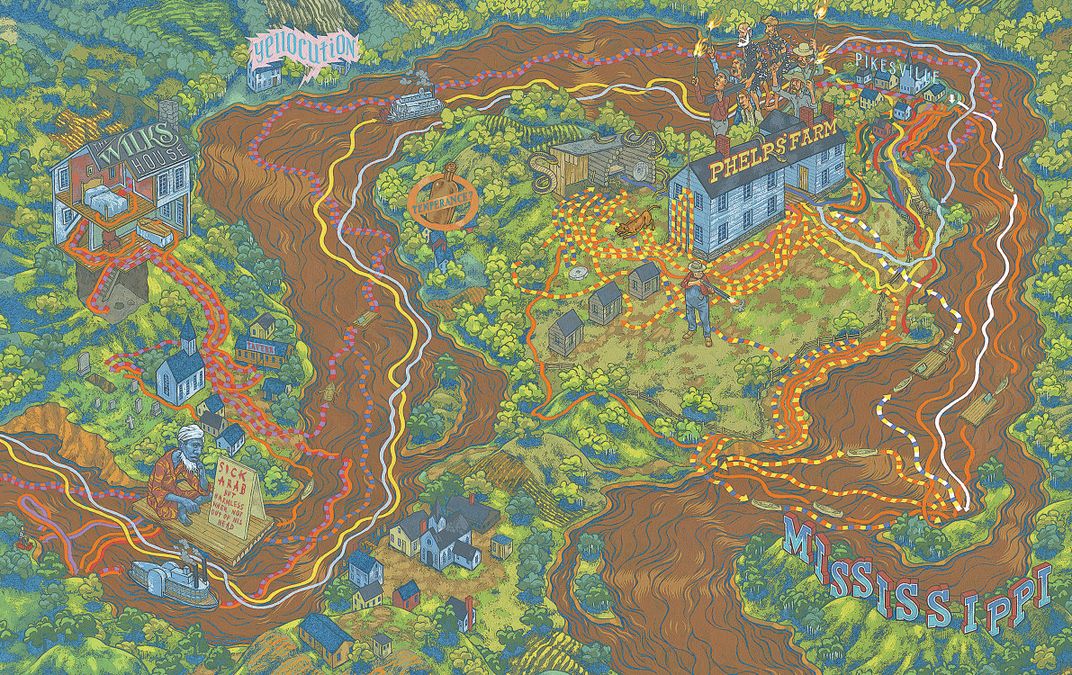These Brilliant Literary Maps Will Help You Understand Your Favorite Book
A lavishly illustrated atlas for Huckleberry Finn and other classics
A great book captivates readers by conjuring incredible worlds from words. These imaginative places exist in the intimate space between writers and their audiences, but occasionally, the illusion blends into other forms of art.
That's exactly what happened when artist Andrew DeGraff interpreted the literary worlds of Robinson Crusoe, Huckleberry Finn and Phileas Fogg for his recent collection, Plotted: A Literary Atlas. His lavishly detailed illustrations are literary maps of classic stories, which help readers "navigate the twists and turns of complex storylines," writes Linda Poon for CityLab.
DeGraff's work pulls readers into old favorites like A Wrinkle in Time, The Odyssey and Around the World in 80 Days. The collection also features non-fiction maps, inspired by books such as Narrative of the Life of Frederick Douglass, which maintain historical accuracy. The fictional ones were left to DeGraff's wild imagination.
In the Los Angeles Review of Books, Jonathan Russell Clark writes:
[M]y favorite of the bunch is of Jorge Luis Borges's story "The Library of Babel," which describes an endless library comprised of "an indefinite, perhaps infinite, number of hexagonal galleries, with enormous ventilation shafts in the middle, encircled by very low railings." The Library contains all possible books ever written, and is so full of knowledge that it is actually quite useless to its patrons. DeGraff first presents a wide view of the Library from above, so it looks like a detail of a mechanical beehive. Then, in a close-up, we can spot people in the galleries, wandering around, looking for answers.
To get a look behind the scenes, DeGraff released several time-lapse videos that reveal how he crafted his remarkably intricate maps. And if those literary worlds aren't enough, intrepid cinephiles can always jump into DeGraff's movie-inspired illustrations. Just remember: don't get too lost.
